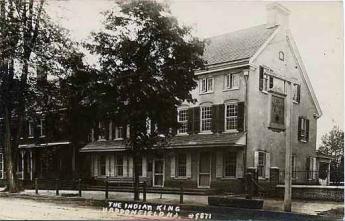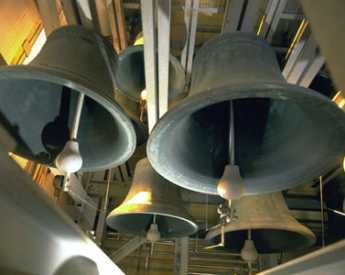Related Topics
Religious Philadelphia
William Penn wanted a colony with religious freedom. A considerable number, if not the majority, of American religious denominations were founded in this city. The main misconception about religious Philadelphia is that it is Quaker-dominated. But the broader misconception is that it is not Quaker-dominated.
Musical Philadelphia
Quakers never cared much for music, but the city has nonetheless musically flourished into international fame. At the same time, quarrels and internal battles have also been world class.
Quakers: The Society of Friends
According to an old Quaker joke, the Holy Trinity consists of the fatherhood of God, the brotherhood of man, and the neighborhood of Philadelphia.
Haddonfield (all 26)(1 of1)volume 38
 Haddonfield is a bit of a secret. It's Philadelphia's "Main Line, East"
Haddonfield is a bit of a secret. It's Philadelphia's "Main Line, East"
Quaker Carillon

|
| Carillon Bells |
A carillon is a graded series of bells in a belfry, to play tunes. Quakers avoid bells and belfreys, but instinctively grasp the concept of a carillon. Why is that so?
Spoken messages at an unprogrammed meeting, like ringtones of a carillon, are followed by persisting vibrations of varying intensity. Care must be taken, no matter how pure the next message may be, to preserve harmony with the ring decay of the tone it has just followed. Not too soon, not too unrelated.
Overly long delays between messages may be discordant, breaking up the tune unless the message is harmonious. Lacking a tune, the messages fall apart. A silence of even longer length may restore the tune for a gathered meeting, or the next speaker may gently rebuke the interrupter. Sometimes the difference is distinguishable only when you know the personalities. A meeting without a tune is a disappointment, pointing toward individual experience instead of group unity. But death or other catastrophes can have its message destroyed by trite commentary. Rising above triteness can be one way a "weighty" meeting rises above its rank to demonstrate the fearlessness of leadership; failing to rise to an occasion is a way of demonstrating ordinariness.
Originally published: Wednesday, October 15, 2008; most-recently modified: Monday, June 03, 2019